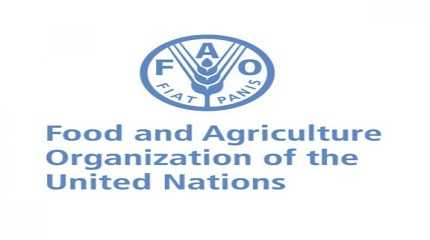
UNITED NATIONS, Apr 25 (APP): Meat, eggs and milk offer crucial sources of much-needed nutrients which cannot easily be obtained from plant-based foods, a new report issued Tuesday by the Food and Agriculture Organization (FAO), a Rome-based UN agency, says.
This is particularly vital during key life stages such as pregnancy and lactation, childhood, adolescence and older age, says the study, entitled Contribution of terrestrial animal source food to healthy diets for improved nutrition and health outcomes, according to the report.
This is particularly vital during key life stages such as pregnancy and lactation, childhood, adolescence and older age, says the study, entitled ‘Contribution of terrestrial animal source food to healthy diets for improved nutrition and health outcomes’.
It’s the most comprehensive analysis yet of the benefits and risks of consuming animal-source foods and is based on data and evidence from more than 500 scientific papers and some 250 policy documents, said FAO.
High-quality protein, a number of essential fatty-acids – together with iron, calcium, zinc, selenium, Vitamin B12, choline and bioactive compounds like carnitine, creatine, taurine – are provided by foods from farm and other livestock animals, and have important health and developmental functions.
Iron and vitamin A are among the most common micronutrient deficiencies around the world, particularly in children and pregnant women, FAO notes.
More than one in two preschool children (some 372 million) and 1.2 billion women of child-bearing age, according to a study published in the Lancet, suffer from the lack of at least one of three micronutrients: iron, vitamin A or zinc.
Three-quarters of these children live in South and East Asia, the Pacific and sub-Saharan Africa.
Not surprisingly, according to the report, consumption of animal-based food from animals varies widely around the world. A person in the Democratic Republic of the Congo (DRC) for example, consumes on average only 160 grammes of milk a year, while average Montenegro resident, consumes 338 kilogrammes.
Looking at eggs, a person in South Sudan consumes 2g on average a year compared to an average 25kg for a person in Hong Kong. The average person in Burundi consumes just 3kg of meat a year, compared to 136kg for someone living in Hong Kong, said FAO.
If consumed as part of an appropriate diet, animal-source foods can help with meeting the nutrition targets endorsed by the World Health Assembly and Sustainable Development Goals (SDGs) related to reducing stunting, wasting among children under five, low birth weight, anaemia in women of reproductive age, and obesity and non-communicable diseases (NCDs) in adults, FAO adds.
But at the same time, the livestock sector “must contribute to addressing a range of challenges,” writes FAO Deputy Director-General Maria Helena Semedo and Chief Economist Maximo Torero Cullen in a foreword to the report.
“These include issues related to the environment” such as deforestation, CO2 emissions, unsustainable water and land use, pollution, and animal health-related issues such as diseases and antimicrobial resistance; and livestock-related issues like zoonotic and food-borne disease risks, said the FAO deputy chief.
The report makes it clear that consumption of even low levels of processed red meat can increase the risk of mortality and chronic disease outcomes, including cardiovascular diseases and colorectal cancer.
However, consuming unprocessed red meat in moderate amounts “may have minimal risk “, said FAO, “but is considered safe with regards to chronic disease outcomes.”
Meanwhile, the evidence of any links between milk, eggs and poultry consumption in healthy adults and diseases such as coronary heart disease, strokes and hypertension is inconclusive (for milk) or non-significant (for eggs and poultry), said FAO.




